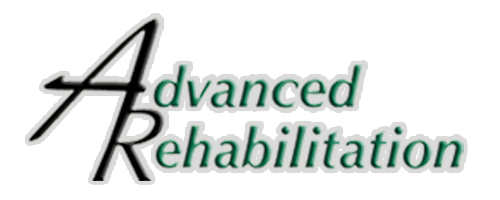Vestibular Physical Therapy FAQs By: Victoria Lavery PT, DPT
What is vestibular rehabilitation?
Vestibular rehabilitation is an exercise-based program to decrease dizziness, vertigo, and imbalance caused by peripheral (inner ear) or central disorders. Common vestibular disorders which can be treated with vestibular rehabilitation include peripheral disorders such as vestibular neuritis and labyrinthitis, benign paroxysmal positional vertigo (BPPV), and Meniere’s disease. Central disorders which can be treated include head trauma/concussion and multiple sclerosis.
What exactly is dizziness?
Dizziness describes a range of sensations including feeling faint, woozy, unsteady, lightheaded, and sensations of moving, spinning, swaying, tilting, and whirling. Dizziness that causes you to feel that you or your surroundings are moving or spinning is considered vertigo.
What causes dizziness?
Dizziness is often a sign of a mechanical disorder and can be caused by inner ear disorders, side effects of medications, neck dysfunction, or more serious problems with the heart or brain.
Why should I see a vestibular/physical therapist for dizziness?
If specific movements, activities, or daily tasks cause dizziness, vestibular therapists can help to provide coping strategies and symptom-specific exercises to reduce or eliminate symptoms. Several studies have demonstrated that vestibular rehabilitation was more effective than the control in improving dizziness and participation in life roles.
How does a concussion or trauma cause dizziness/imbalance?
Concussions or trauma can lead to a malfunction and abnormal functioning of the vestibular system in the inner ear which can lead to dizziness, vertigo, and/or imbalance. When the vestibular system is not functioning properly, the body relies on the visual system and joint receptors for balance which often leads to fatigue and difficulty performing daily tasks.
What can physical therapy do for post-concussion or trauma-related dizziness?
Therapists can utilize symptom-specific exercises to decrease symptoms, improve balance, and stabilize gaze. Initially, exercises may increase symptoms temporarily to eventually desensitize the vestibular system.
Who can benefit from vestibular therapy?
Anyone diagnosed with dizziness, imbalance, vertigo, Meniere’s, BPPV, neck-related dizziness, and migraines. Symptoms that can be helped with vestibular therapy include dizziness/blurriness with head movements, neck tightness/stiffness/pain, imbalance, headaches, frequent falls, general dizziness/wooziness/foggy feeling, and vertigo/spinning.
What are the main goals of vestibular rehabilitation?
The main goals of vestibular rehabilitation include decreasing or eliminating dizziness or vertigo, improving visual control, learning to coordinate eye and head movements and increasing tolerance to different movements. Vestibular rehabilitation can also improve balance, overall function, reduce risk of falling, and increase activity to return to prior level of function and improve quality of life.
If you have any questions or would like to set up an appointment, contact us at Advanced Rehabilitation!
References:
“Vestibular Rehabilitation.” Cleveland Clinic, 2020, my.clevelandclinic.org/health/treatments/15298-vestibular-rehabilitation.
“Frequently Asked Questions about Vestibular Rehabilitation.” Frequently Asked Questions | Sports Medicine at Gwinnett Medical Center | Gwinnett Medical Center, 2020,www.gwinnettmedicalcenter.org/sports-medicine/specialty-therapy/vestibular-rehabilitation/faqs.
“Dizziness.” Mayo Clinic, Mayo Foundation for Medical Education and Research, 15 Apr. 2020, www.mayoclinic.org/diseases-conditions/dizziness/symptoms-causes/syc-20371787.
Vestibular Rehabilitation to Improve Dizziness, Balance and Mobility in Patients with Unilateral Peripheral Vestibular Dysfunction, 2020, www.cochrane.org/CD005397/ENT_vestibular-rehabilitation-to-improve-dizziness-balance-and-mobility-in-patients-with-unilateral-peripheral-vestibular-dysfunction.
“Concussion.” VeDA, 18 Aug. 2020, vestibular.org/article/diagnosis-treatment/types-of-vestibular-disorders/concussion/.
